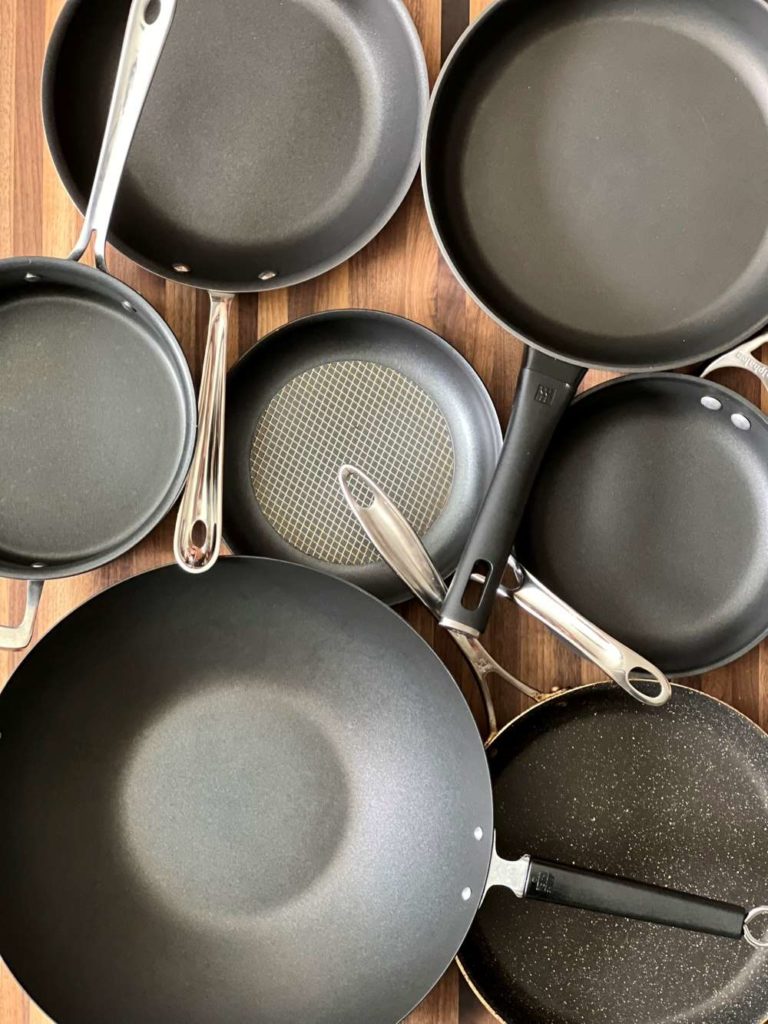
Do you recall your first nonstick pots and pans? Mine was a $20 set purchased from the drugstore. My sister, brother and I had moved into an apartment while I was going to college. I had time to cook but not to clean. We needed something affordable, too. The set lasted us about nine (9) months, during which I unknowingly heated the pans up too hot on the cheap electric stove. We bought another set because the cookware seemed like a disposable item.
I've learned a lot since those years -- such as don't heat nonstick coated pans too hot! I've mostly stuck to nonstick frying pans (skillets) and a few pots, which are great for messy projects like making soy milk and tofu. I also love carbon steel skillets but many people own nonstick coated frying pans so I try to assess what works well in home kitchens. Nonstick pans also theoretically allow people to cook with less oil but overall, it's the nonstick factor that attracts. I can pan-fry tofu in my carbon steel skillet but sometimes things stick and the browning can be a little uneven. A coated nonstick skillet is more consistent.
I've had the same nonstick skillets for years but starting last fall, I began exploring replacing them. I ended up getting a bit obsessed and bought several new skillets and comparing them to my old ones. Here's what the past six (6) months of using them all has taught me. Scroll on down for short video of highlights. Feel free to add your knowledge too!
Reliable Calphalon Premier
These sturdy, affordable frying pans by Caphalon have been my everyday nonstick skillets over the past fifteen (15) or so years. They are affordable and heat up relative well. I've had two or three sets, retiring them because the walls can get cruddy. The anodized exterior helps for heat conduction. If you're looking at them, realize that they do not function on induction stoves. However, they are a good value for their quality, especially when you buy a set of the 10 and 12-inch Premier skillets. I picked up an 8-inch Calphalon at Marshalls! Shop around to try one to see if you like it.

Sturdy All-Clad
Along with the Calphalon Premier, I've also enjoyed using All-Clad nonstick skillets. They are pricey but I check this site for discounted outlet pots and pans. All-Clad's nonstick skillets last a long time. I beat up my cookware and have been surprised at the performance. The metal cladding makes the skillet great for heat conduction. The basic skillet heats up relative fast. If the skillet got funky and faded looking (often times due to my poor washing), I soaked and gently scrubbed it back to life. The one below is brand new since my husband recently told me I had to retire the last one, which I had been using for about eight (8) years. All-Clad currently has the skillets in the D3 line; a set is nearly $200 so it may be more than you want to spend.

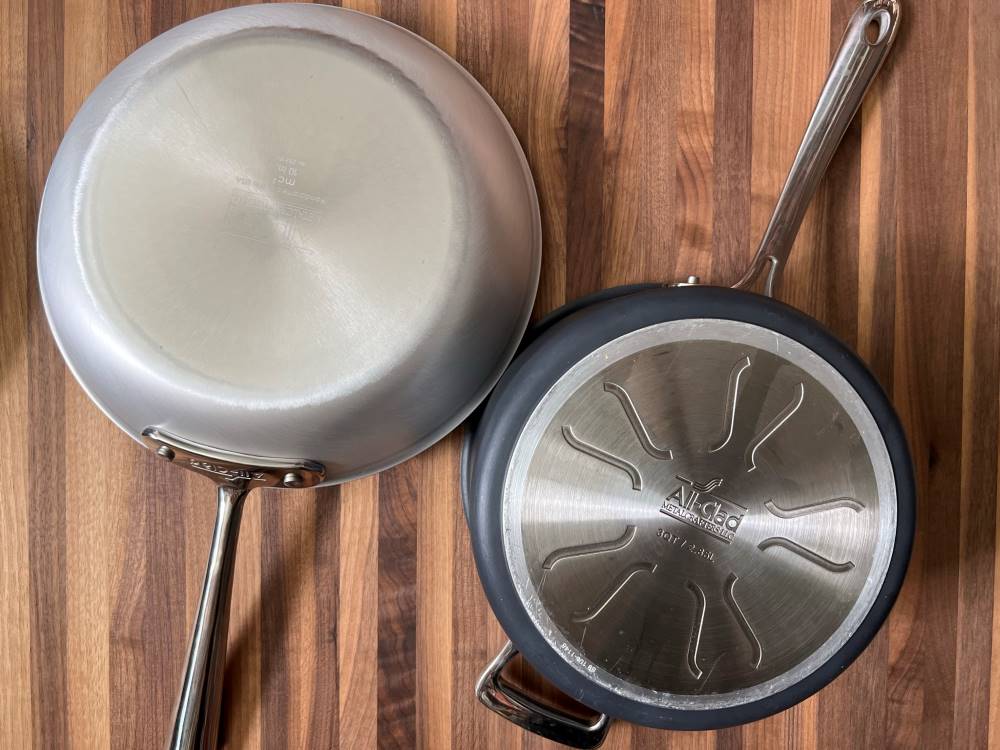
A 3-quart pot is one of the most used pans in my kitchen. Because I get tired of scrubbing All-Clad stainless steel pans, I recently purchased a 3-quart pot (above on the right) from the All-Clad B1 line, which is similar to the HA1. The B1 and HA1 are anodized like the Calphalon Premier, but they also have an extra plate on the bottom for better even heat conduction and preventing warping. The extra layer of metal is suppose to heat the pan faster but I have not noticed a huge difference in speed.
For my needs, the important difference between the B1 line and the All-Clad HA1 is with the handle design. The former has a curved handle while the latter has a flat/straight handle. For a tallish saucepan, the curved handle is easier to pickup for me. When shopping for cookware -- pick it up to see if you like holding it! Some of the HA1 pans have sides that curve inward, which is suppose to prevent splatter but I cared more about the handle design. Both HA1 and B1 are mid-priced nonstick cookware from All-Clad. Both HA1 and B1 are induction ready. If I were to buy nonstick All-Clad skillets, the HA1 nonstick French skillet sets would probably be my choice, because it comes in a wider French style skillet (see below).
Speckled Henckel Granitium
For decades, I thought of Zwilling J.A. Henckel as a knife company but they're also producing very good cookware made in Italy. I test drove a 3-piece set of Granitium purchased from Costco and a Madura deep skillet purchase online. The Granitium has a lightly speckled surface that looks charming but is supposedly quite strong with mineral particles involved in the multilayer surface. So far, the skillets have proven to heat gently but evenly; there doesn't seem to be hot spots in the pans. The skillets I purchased from Costco darkened a bit over time, but that's not a deal breaker (the 12-inch on the top left has not been used).
The Henckel Granitium skillets are wide, with the 10-inch skillet being closer to 11 inches wide. I like the extra cooking space. Granitium is not for induction cooktops. The Granitium surface is very good and we'll see how it performs over time. If you have a Costco membership, it's worth checking out.

Space Age Zwilling Madura
Whereas Granitium is somewhat homey, Zwilling's Madura Plus line is sleek and modern. Madura Plus has a very solid, heavy feeling. Compared to its Granitium kin (they are owned by the same parent company), Madura Plus is more BMW whereas Granitium is more VW. Induction ready Madura Plus has a bottom plate for heating the pan evenly, and the rivets holding the handle in place are practically seamless with the pan wall. In the online pan description, Zwilling says there is some granite involved in Madura Plus. I've never had a nonstick deep skillet before and I really really found it useful. It's like a cross between a wide pot and a frying pan. You can fry as well as braise in it with no problem. My husband and I reach for the Madura Plus 11-inch deep fry pan often to cook dinner. However, Zwilling has a two-skillet set (9 and 11 inch-skillets) that's very practical and reasonably priced for a high quality product.
Hybrid Nonstick-Clad Anolon X
Enter Anolon X, which is touted as a hybrid pan of nonstick coating plus clad metal. It is often compared to pricier Hexclad. I bought an Anolon X skillet set to try it out. The netlike metal pattern is suppose to heat more evenly to distribute oil all over the pan surface (no pooling oil on the sides), thereby cooking food more evenly. The metal pattern theoretically cooks with greater heat.

How did Anolon X do in the kitchen? Cooking on a hybrid surface initially takes patience. The cooking surface takes a little longer to heat up (note the thick metal plate at the bottom) and you want to use medium heat -- like you would a stainless steel All-Clad. On the first few rounds, my fried egg stuck but it also eventually released. I just had to wait. Sometimes the metal clad pattern made searing marks, which was a little strange to look at but the extra bit of browning seemed to provide a little more flavor due to the Maillard reaction happening. If food stuck, I soaked the cooled pan in water and then gently scrubbed the surface clean.
Before I wrote this nonstick round up, I fried an egg in the small 8-inch skillet, heating the pan on medium heat and the egg fried up beautifully with no pattern. Over the past six months, I've found that food cooked in the Anolon X pan developed a nice bit of crispness. My fried eggs had deliciously delicate fried browning edges but the yolks didn't over cook. Steaks and chops are good in the skillet too. Once the skillet heats up over medium, I tend to increase the heat as needed. Also, the Anolon X does cook extremely evenly. It's a premium pan so it better. Because Anolon X isn't yet widely sold, I purchased the 8- and 10-inch skillet set directly from Anolon and it arrived promptly. Anolon X is induction ready.
Anolon Advance

If Anolon X is too expensive for you or if you'd like a more traditional nonstick surface, Anolon Advanced is very good. I bought a 14-inch Anolon Advanced skillet for my mom and she loves it. I use it all the time at her house. In our home, we have a 1-quart Advance saucepan for small tasks like heating up milk (the cleanup is easy with a nonstick pan). Performance-wise, Anolon Advance heats up slowly but once hot, the heat is even and long lasting. The handle is comfortable to hold. Compared to Anolon X, the Advance does have an extra plate on the bottom for heat conduction. However, its searing power is not as strong as the Anolon X, it's less expensive. (Note that the links to Anolon's site is an affiliate link. If you purchase through the links, I will receive small financial benefit.)
Regular vs French Skillet
When buying a nonstick frying pan, consider what you want -- a regular skillet with sloping sides that you may pour things out of easily? Do you flip and toss food in your skillets? Or, do you want to maximize the bottom cooking surface? Below are two All-Clad nonstick skillets. The one on the left is a conventional frying pan and the one on the right is a "French" skillet with less of a slope. They are both 8 inches in size. Some people distinguish them as a frying pan vs. skillet but in my brain, those terms mean the same. However, the pan slope and sides are different!
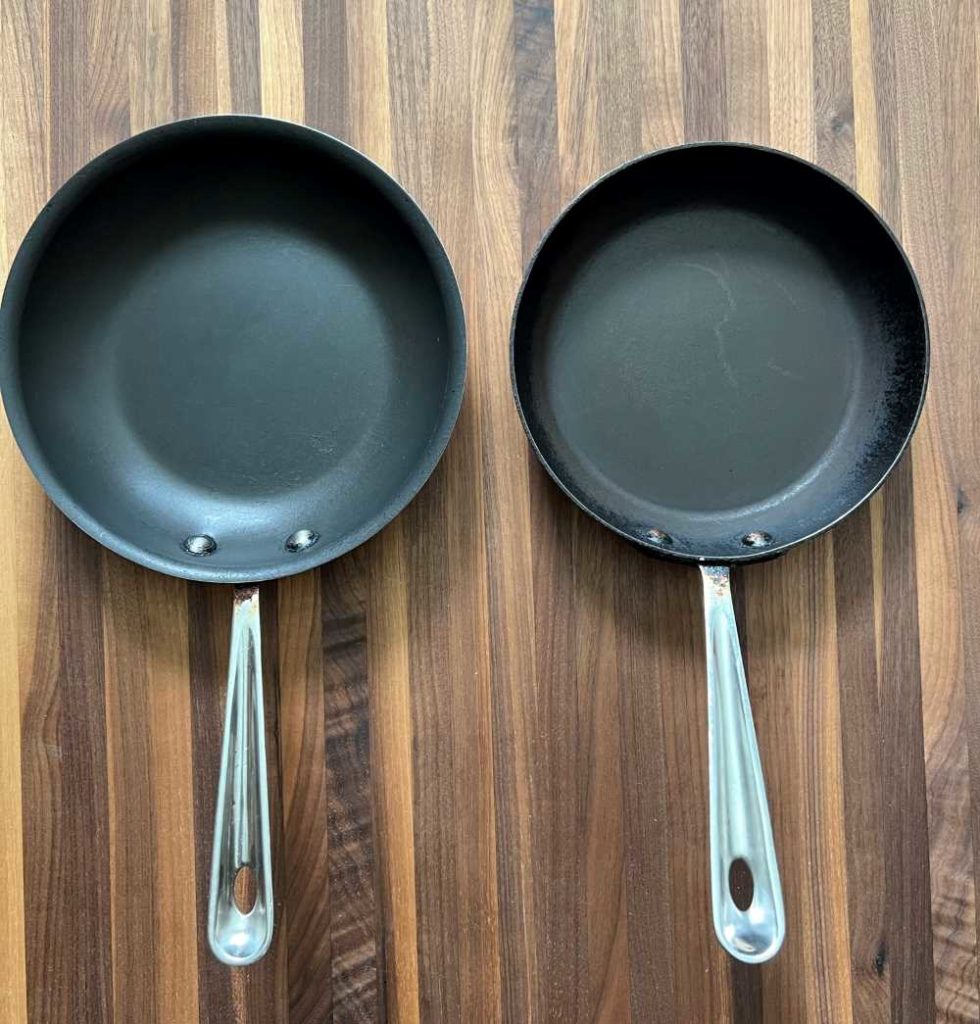
Nonstick Pan Safety
I don't expect my nonstick pans to become heirlooms like my carbon steel skillets but I have kept many of my nonstick pans for many years. Despite what manufacturers say, I rarely use metal utensils in them. I also don't overheat them. As Lisa McManus of America's Test Kitchen said in an article at Today.com, it's not likely that a nonstick pan will get hotter than 600F degrees on top of the stove. That temperature is when Teflon releases potentially hazardous fumes. She advises adding oil to the pan, and if it smokes (usually at 400F degrees), your pan is getting too hot. Turn down the heat and ventilate. This article from Good Housekeeping on nonstick cookware safety points the temperature at a more conservative 500F degrees. Additionally, I also do not put nonstick pans in the oven, despite what manufacturers claim nowadays.
Many consumers have concerns about nonstick coated surfaces degrading and flaking off. The Today.com article also goes on to point out, "If a person does inhale fumes from nonstick cookware, the American Cancer Society says that the only risk is experiencing flu-like symptoms, but there are no other known risks to humans." The Good Housekeeping piece notes: "If cookware is flaking, you might accidentally swallow a chip - but don't be concerned, says Paul Honigfort, Ph.D., a consumer safety officer with the Food and Drug Administration. 'A small particle would most likely just pass through the body, without being absorbed and without having any ill effect on the person's health,' he says."
Nonstick Frying Pan Summary Video
Obviously, you have options. Decide what you can afford and what is important to you, for example: comfortable handle, fast or slow/even heating, rivets that show or disappear, induction ready, French skillet or regular fry pan, and/or a brand to match what you already have. Also use them wisely. Many of the heavier nonstick pans heat evenly and are not ripping hot but rather offer solidly hot cooking surfaces. I should have turned down the heat a touch on the steak in the video below but it wasn't smoking out of control. When the video wasn't recording, I was ran the hood.
Below is a quick look at three of the skillets I mentioned. (P.S. The daikon radish cake recipe is here.)
For me the beauty of the new nonstick pans boil down their ability to evenly heat and cook, be easy to clean, and in certain circumstances, cook food at a relatively high heat for crisp edges and a tad bit of extra deliciousness. I like the Anolon X frying pan and Madura Plus deep skillet a lot but they may not work for your budget and needs. For a French skillet, I'd go with All-Clad A1 or Henckels Granitium. So that's why I have so many skillets in my kitchen! (Next up is a look at a nonstick wok.)
If you have experience with these or similar pans, share your nonstick knowledge. For example, I've yet to find a ceramic nonstick pan that I like. Food seems to slide around them too much. Maybe you have a favorite?




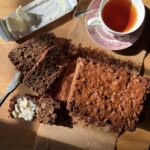
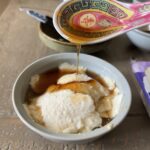
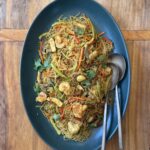
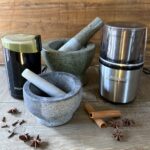
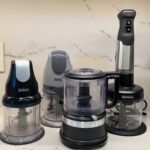


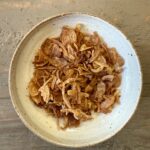
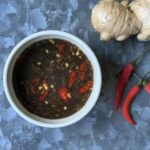
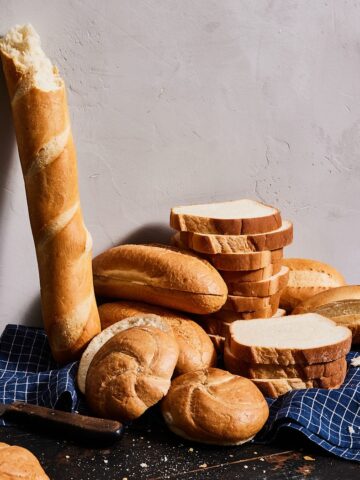



Terri Smith says
Great article. We like Hestan non stick pans. Down side is that they are pricey. Very light weight, easy to handle and well made, however.
Andrea Nguyen says
Hestan makes gorgeous cookware. The parent company also makes Anolon and others. Hestan is the premier line. I see that there's a good deal on the 8-inch skillet! You tempt me!
https://hestanculinary.com/products/probond-forged-stainless-steel-nonstick-skillet?variant=39420979740715
Cee says
I have used All Clad for years but have been won over by the quality of Misen- at a great price, check out their non stick, and all their cookware.
Andrea Nguyen says
Thank you for the tip! I was curious about the Misen pans and happy that you've given them a vote of confidence.
stacy says
I abuse my non stick pans (never over medium on my 18K btu gas range) but I do put them in ovens (up to 400 degrees)and dishwasher. I have tried every brand from all clad to calphalon to scan pan to the williams sonoma branded in partnership with hestan to the cheaper oxo pans. I use these skillets everyday and I have yet to find a brand where the coating doesn't start to come off after 9-18 months despite all saying they are oven safe (usually to 425 or 450) and dishwasher safe. So I have started just buying the cheaper oxo ones as they all end up being tossed anyway and it did win the ATK non stick award. I'm confident this probably wouldn't be the case if I hand washed but I just want my hard working skillets to be easy to deal with.
Andrea Nguyen says
Stacy, this is great first-hand information! Thank you for honestly sharing how you use the pans. I LOVE it. This is how we cook. As real people. Terrific tips and insights. I greatly appreciate it all.
Randy says
I've used mini brands of non-stick, including cuisinart, all clad anodized and stainless steel, tramontina, Ikea, oxo, and a few others I can't remember. I believe the non-stick technology has continued to improve over the years, so some of these that I've tried may perform better now than they did some years ago. But in my experience, I haven't found anything that beats the oxo that was the ATK choice. The performance of the non-stick surface is as good as the best, and seems quite sturdy. I expect these pans to be replaced after 2 or 3 years, but so far, after 6 months, we got so can surface seems to be holding up really well.
Steve says
Which, if any of these, are not made in China?
Andrea Nguyen says
They are likely all made in China, as are many other products.
Randy says
I can't speak for all of them, but the All-Clad stainless steel is made in the US.
Andrea Nguyen says
It depends on the piece of AC. For some folks, this is an important issue. Always read the fine print! Thanks, Randy.
Magdalena says
Scanpan - induction ready- are the best ones in my experience...completely safe (no toxic stuff), and one can use metal tools. Food is seared beautifully. I had two All Clad non sticks, but they cannot pass the test when compared to Scanpan (otherwise, love my All Clad Dutch oven and few other pots and pans that are stainless steel+that grey external coating).
Andrea Nguyen says
I've not tried Scanpan, Magdalena! Thanks for sharing your experience and comparison to All-Clad's nonstick. Greatly appreciate your expanding our knowledge.
Brendan says
As a scientist I try not to worry about things unless there is good reason, and the increasing pervasiveness of fluorinated compounds, or "forever chemicals" in drinking water and consumer products unfortunately provides something worth worrying about. These largely unregulated compounds fit into the "PFOS" or "PFOA" category and are most dominant in non-stick and "stain-proof" consumer items as well as fire fighting foam. The chemicals are carcinogenic and can be inhaled from a heated pan and absorb into your food, even if the pan is not flaking. The science is not there as to what is a safe exposure level, especially given the 1,000's of different forms PFAS/PFOA may take. After taking Andrea's tofu class, where she recommended a non-stick pot for cooking the soybean slurry, I finally found a pot that is supposedly PFOS and PFOA free (Greenway) and it seems to work great. The scientific community is learning new things about PFAS/PFOA daily and EPA finds these chemicals to be such a significant concern that they are undertaking a massive nationwide effort to sample drinking water wells to assess the extent of PFAS/PFOA contamination (Google Orange County PFAS groundwater). I am not trying to be alarmist, but this is a serious health concern that you will be hearing increasingly more about in the years to come. For your health I recommend avoiding all non-stick cookware that is not explicitly PFOS AND PFOA free. https://www.cookinglight.com/news/fda-non-stick-pans-toxic-contamination
Andrea Nguyen says
Good information to have, Brendan. Thank you. Indeed, consumers need to explore their options before buying. As the Cooking Light article also points out, there are "various meats, seafoods and chocolate cake from grocery stores across the country." Ai-ya! Modern life is complicated. I try to do my best to minimize my footprint on this earth and stay healthy. Cooking food from scratch at home is a great place to start.
So happy you're continuing your DIY tofu journey. Greatly appreciate your weighing in.
heidipie says
I've been VERY happy with my Tramontina 12" Professional Aluminum Nonstick Restaurant Fry Pan. It's beautifully balanced, heavy but not too heavy, with a generous cooking surface and a great slope for flipping food. My restaurant-veteran boyfriend routinely heats it way too high on my electric stove, with no consequences (other than freaking me out). I've had it 18 months, use it most days and it looks as good as new. And it's $40 on Amazon!
Andrea Nguyen says
I've heard about the Tramontina pans. It's good to know that you have had good experience with it. Thanks for the tip.